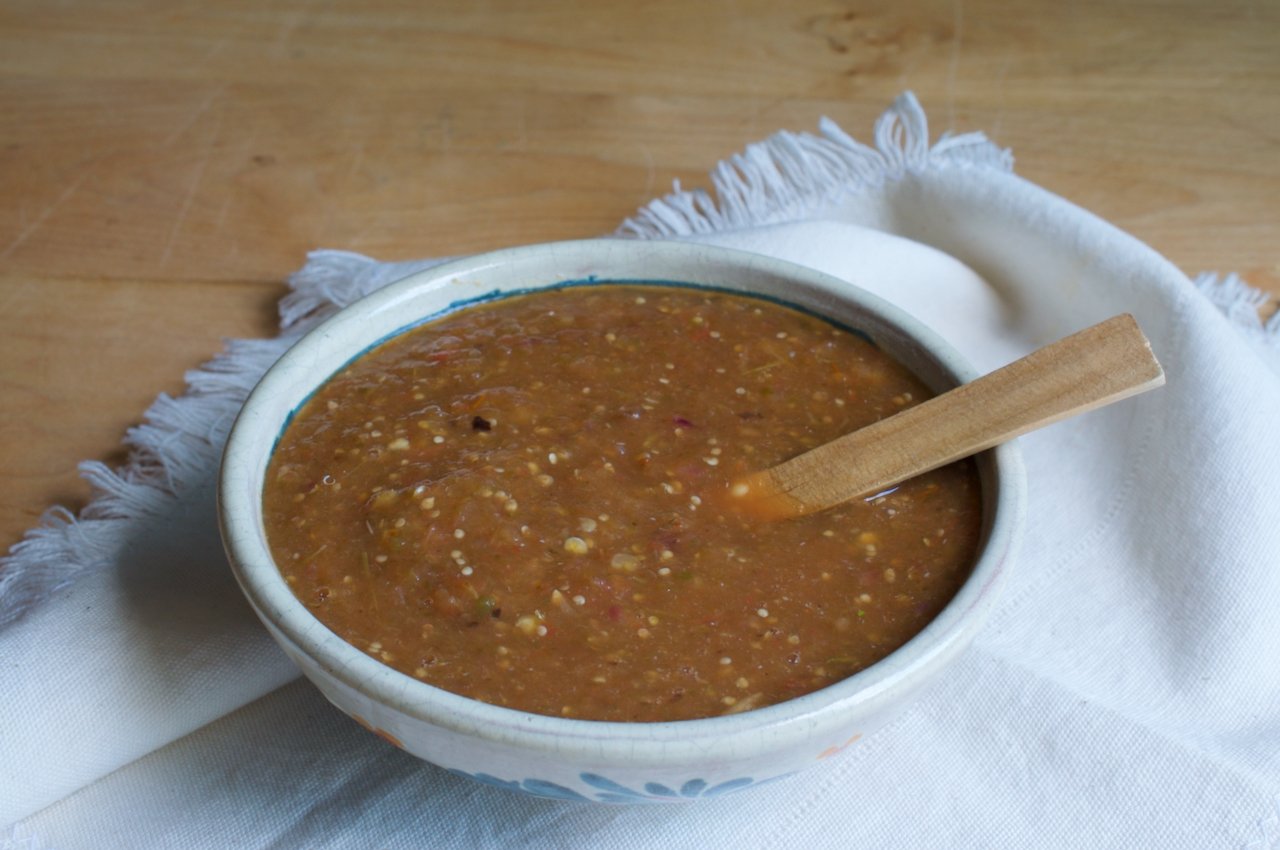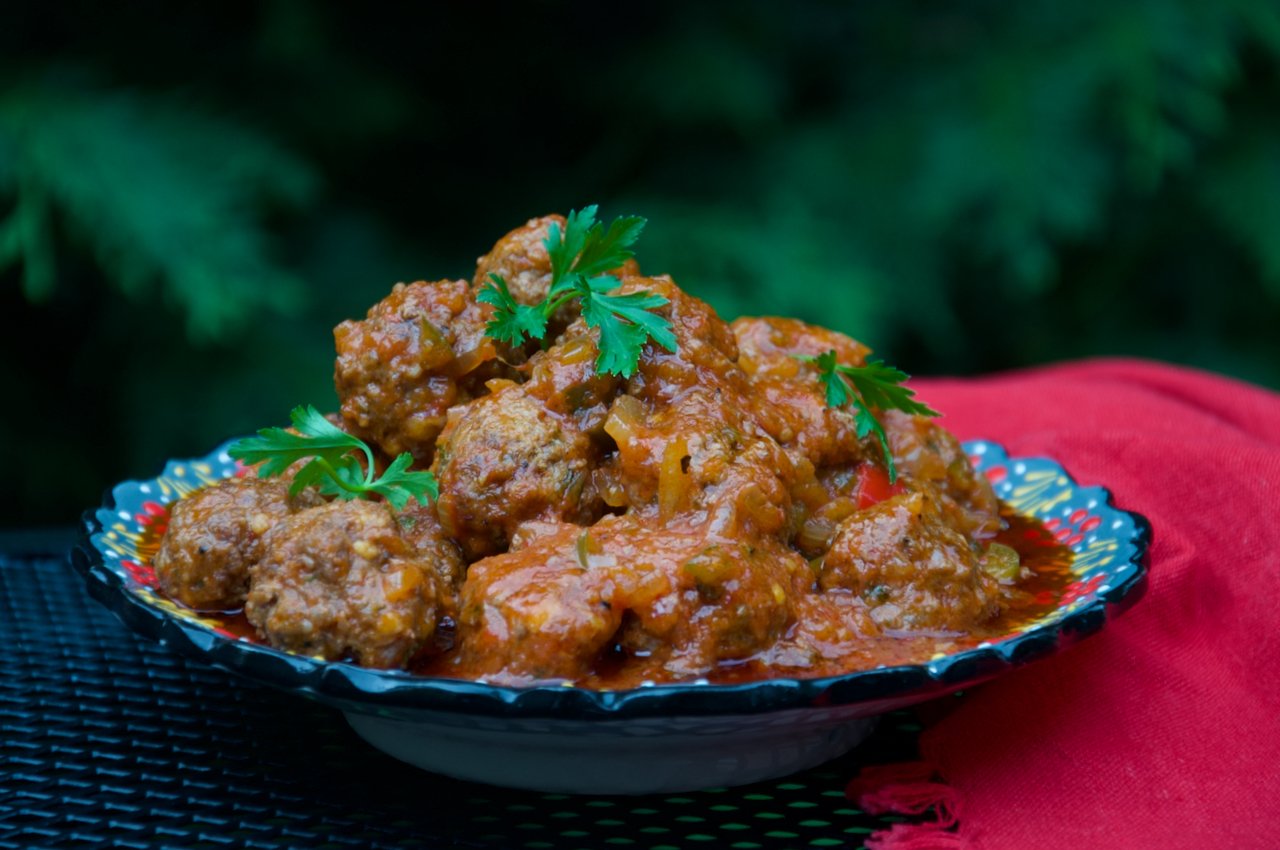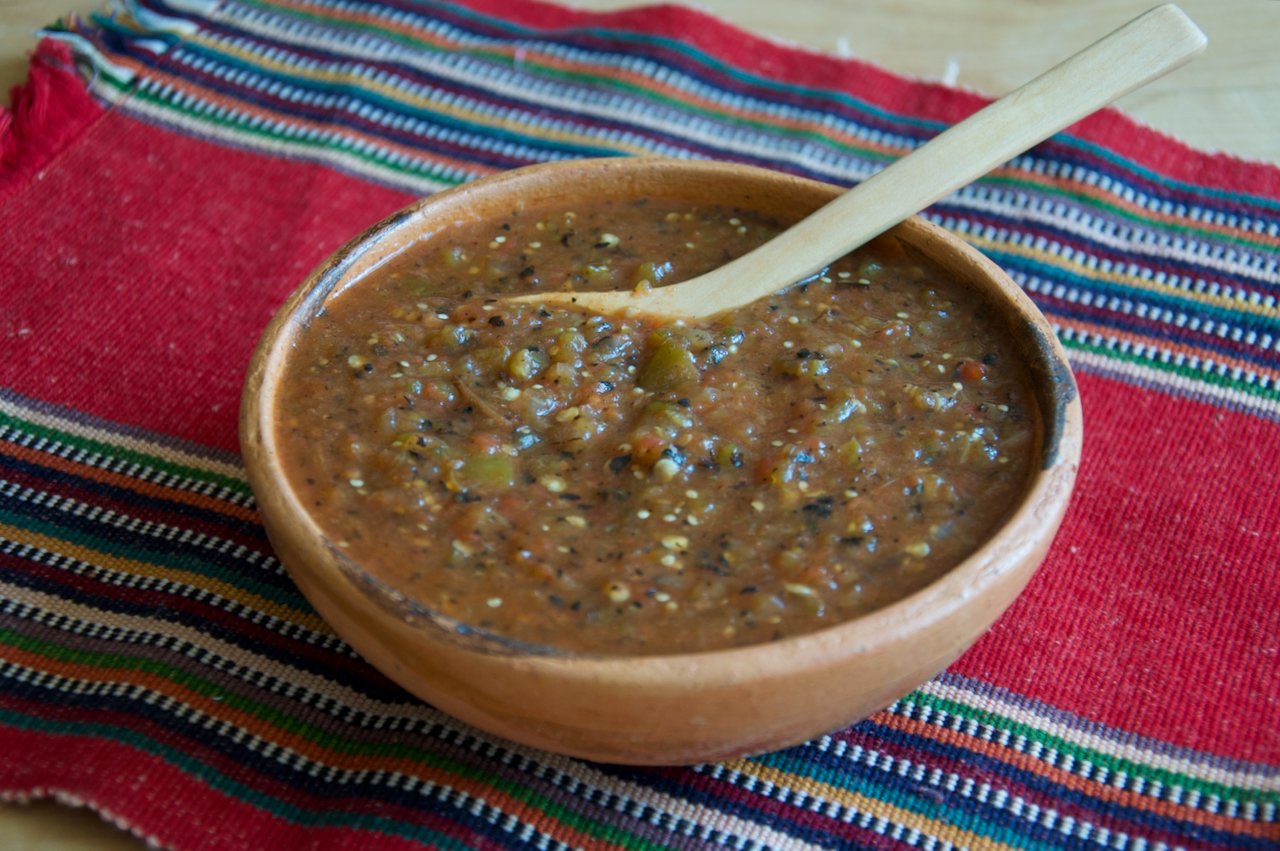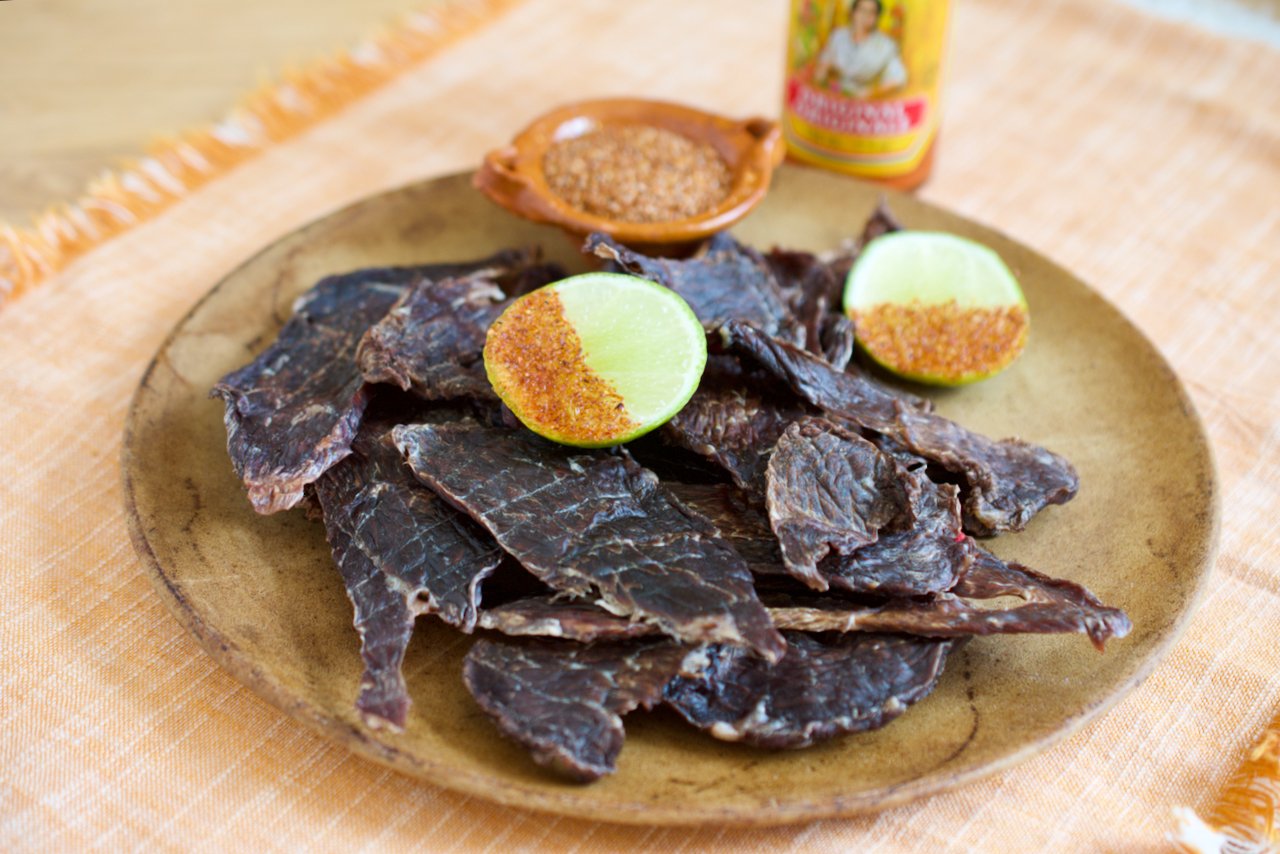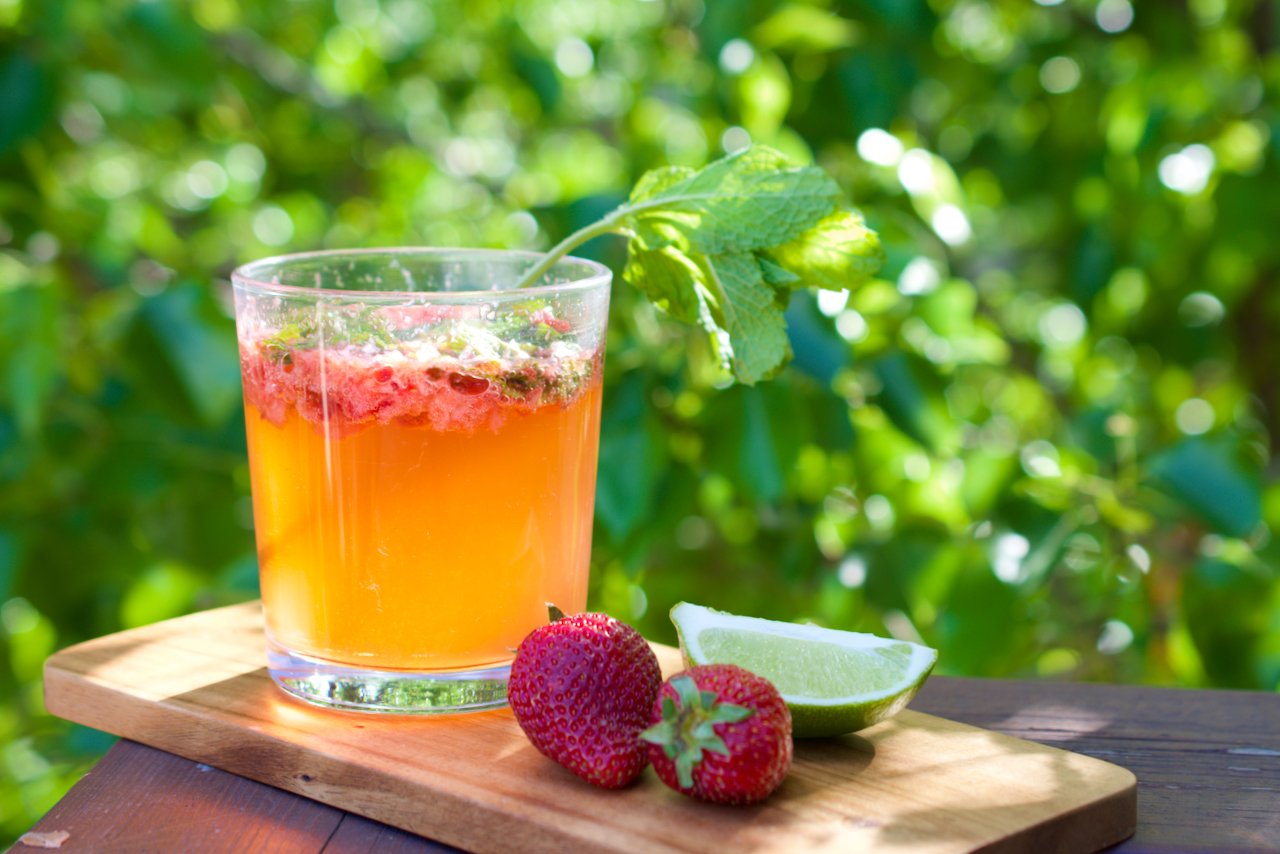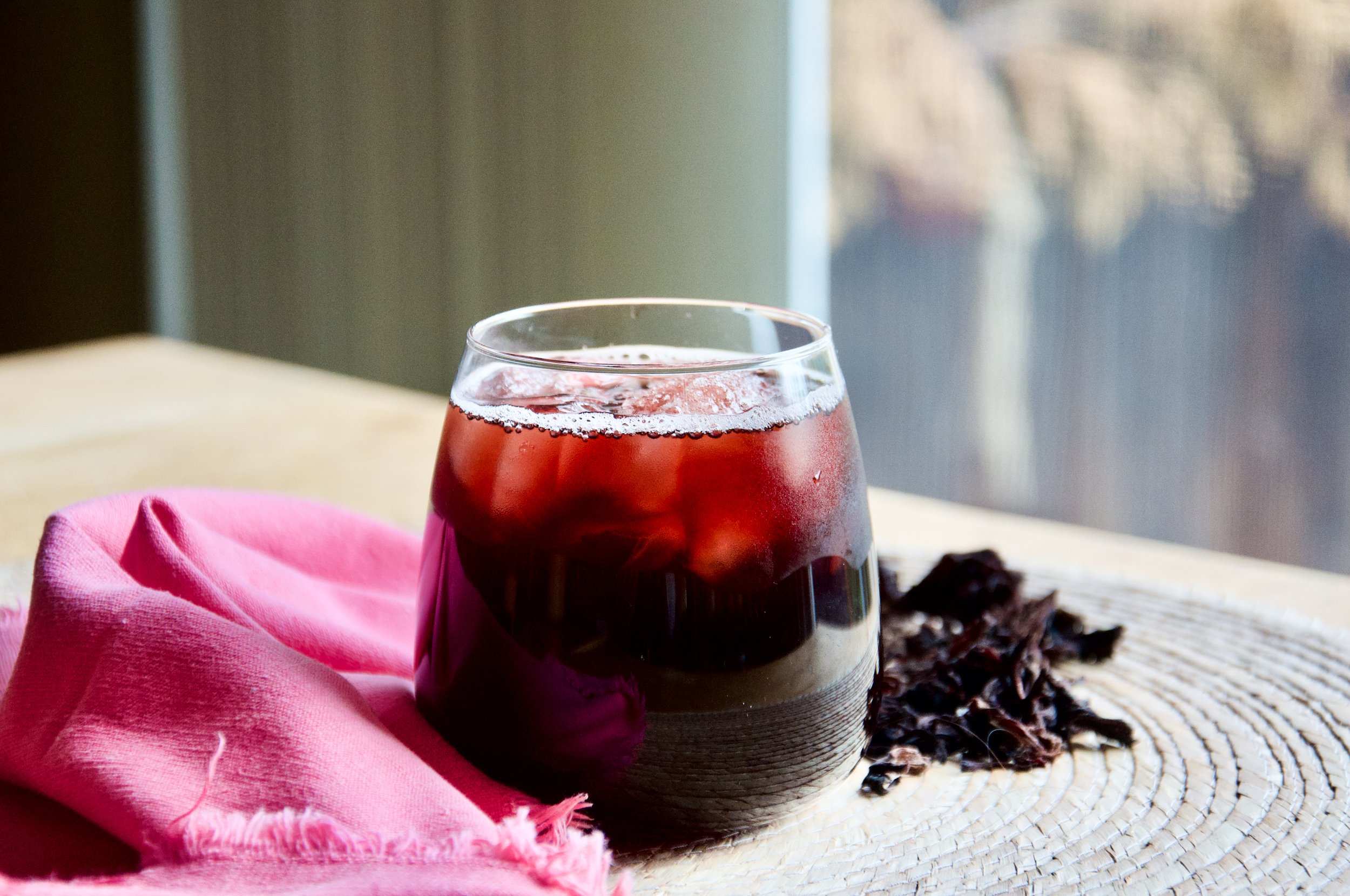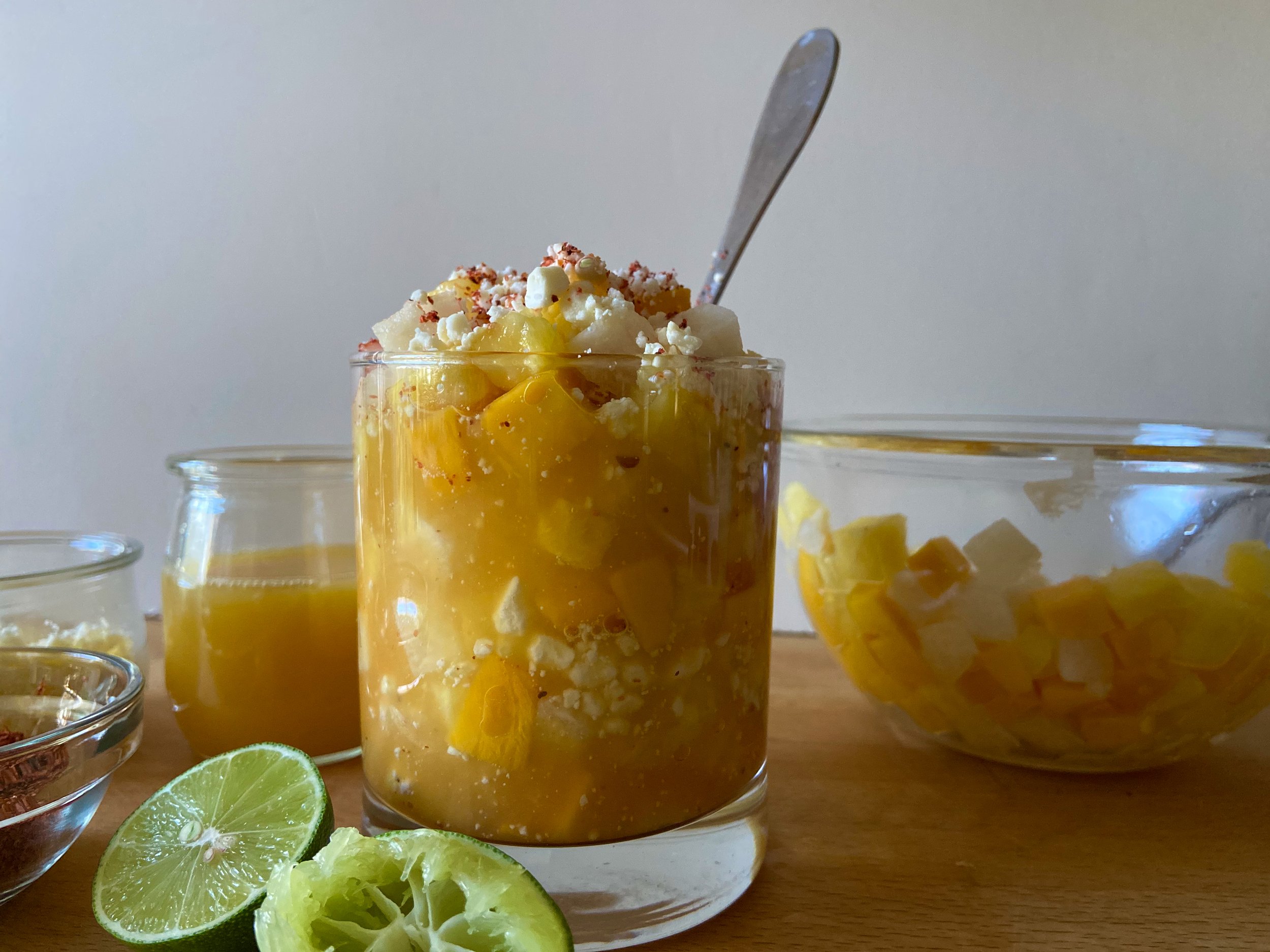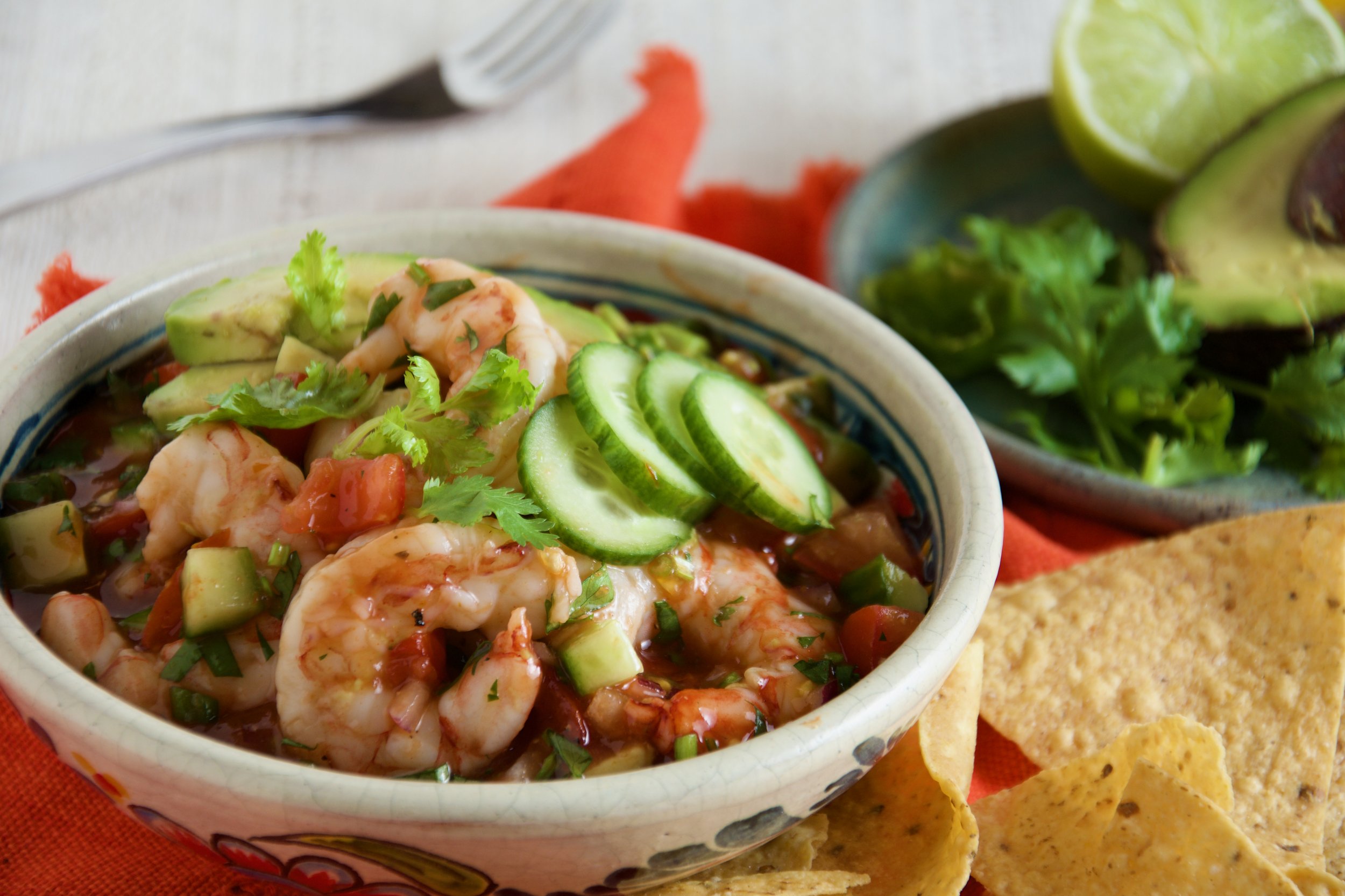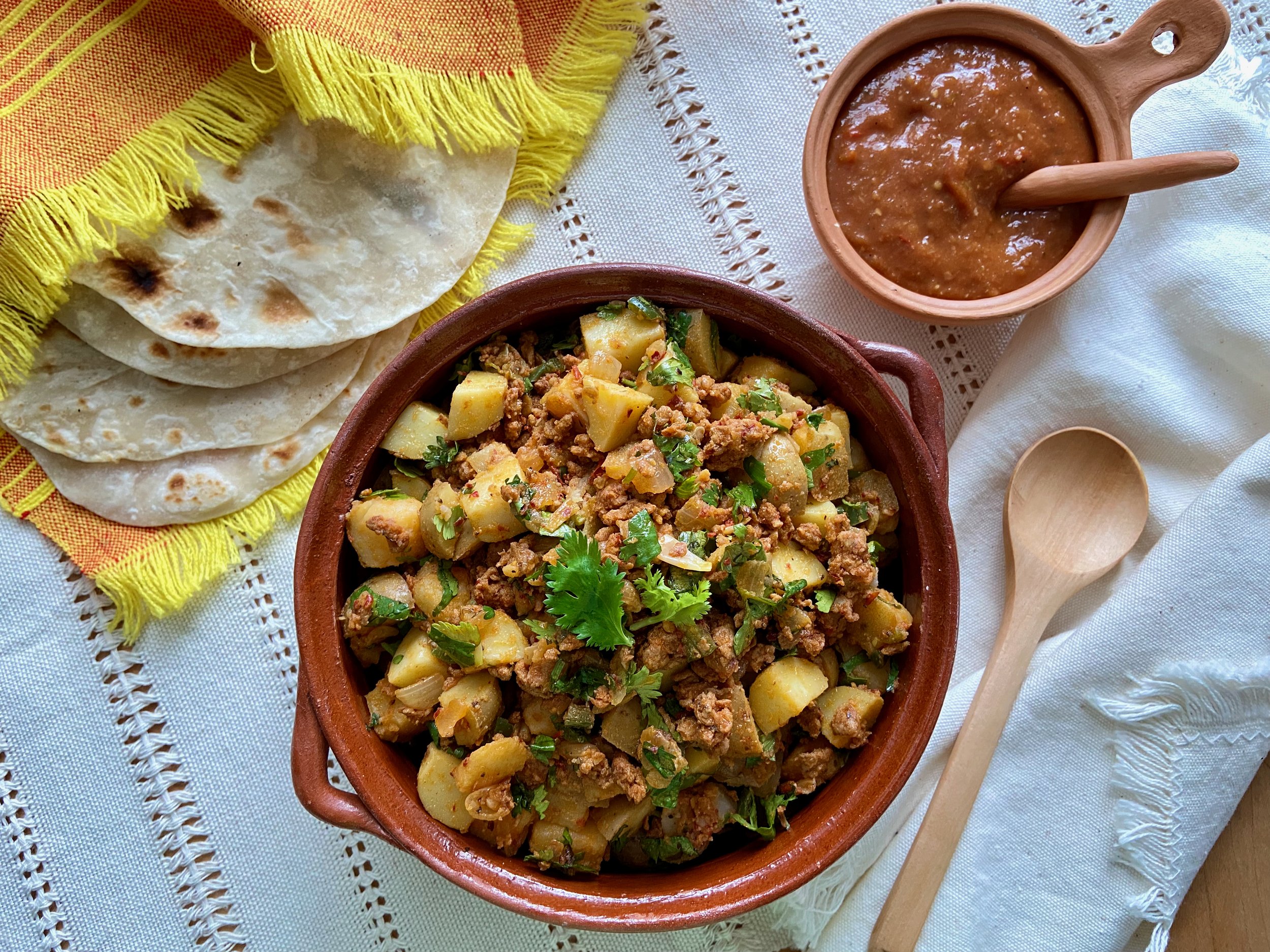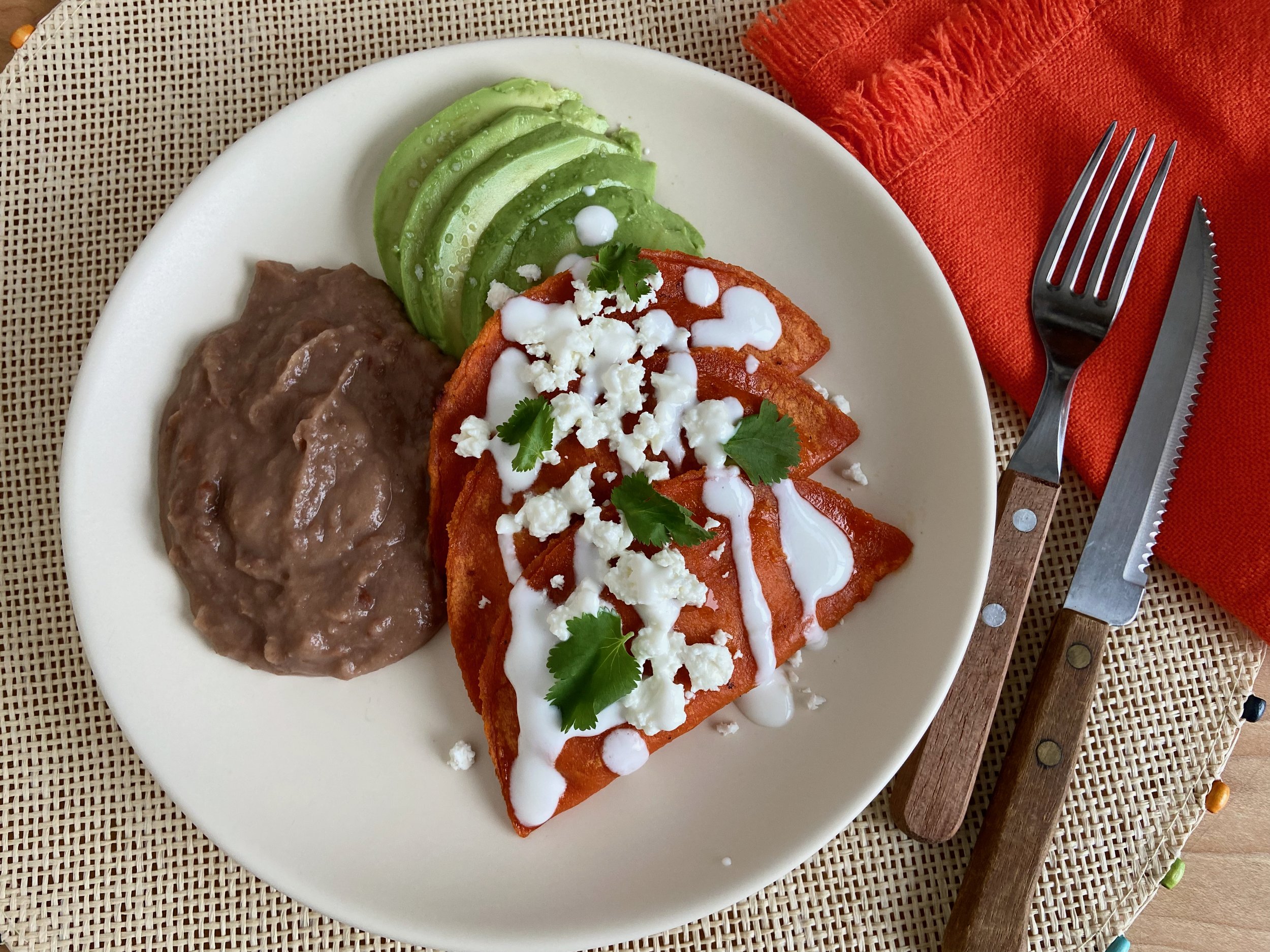I first tried Enchiladas Potosinas at my cousin Geraldina’s home in San Luis Potosí in central Mexico. Nowadays, they are a staple in the San Luis kitchens, often served for simple, easy dinners. You can buy them at grocery stores, to be brought home and simply griddle-fried and served for a very quick and satisfying meal.
But it was not always so… Enchiladas Potosinas came about - as the story goes - as a happy accident. It was in the early 1900’s when Doña Cristina Jalomo, from a small town called Soledad on the outskirts of San Luis, went to the local mill to grind corn for masa for making tortillas. When the miller handed her the masa she noticed it was tinged red and when she asked why, she was told they had ground dried cascabel chiles beforehand, and that’s why her masa turned red. Doña Cristina was not too impressed, but she was not about to waste, and she used that red tinged masa to make tortillas for her family. When they tasted these red tortillas, they all agreed they were delicious, so from then on she requested her masa be ground with chiles.
She went on to create her signature enchiladas with that red masa, for sale in a stall in the town plaza on Sundays and holidays. Doña Cristina and her Enchiladas became famous, so much so that her dish is now one of the most iconic dishes of the State of San Luis Potosí - her daughters registered the dish in 1965 and it is now an icon. What Doña Cristina created continues to be a family business, with her grandson carrying on her legacy to this day.
The name Enchilada refers to the fact that the masa has chiles in it. These are a bit different to the other types of enchiladas that are typically covered in sauce. In this case, the chiles are IN the masa, and it flavours it in a subtle and delicious way.
To make this masa, we have to rehydrate guajillo or cascabel chiles, then blend them and add that chile paste to the masa. After that, we can make these enchiladas, or use the masa to make “red tortillas”, or “tortillas enchiladas” that can be used to make other types of enchiladas or simply used as they are. The masa itself is a dream to work with and it makes very pretty and colourful tortillas. But the focus of or story today is Doña Cristina’s enchiladas, so let’s get back to the story.
Doña Cristina decided to make a type of quesadilla, but the filling is a delicious salsa and cheese combo. It’s like these enchiladas are flavoured from the inside out! A thick salsa is mixed in with crumbled cotija cheese, then it’s added to the tortilla as it bakes on the griddle. As the tortilla cooks on the griddle, while it’s still raw, you mound some filling on it, fold it over and press the edges to seal. Since the tortilla is still uncooked, the edges seal very nicely with the help of a spatula. Then you continue to cook it and that is that. You can make a lot and reserve, or you can freeze them and have them handy for a dinner emergency.
A few things you can make ahead: you can make the masa a day ahead and keep refrigerated until ready to use. You will have to knead it again until soft and pliable before using. You can make the salsa 2-3 days ahead and keep refrigerated until ready to use, or you can use any other salsa, as long as it is not runny.
To finish, the quesadillas are pan-fried and simply served with a drizzle of crema and a bit of additional cheese as a garnish. Usual sides are avocado and beans. So simple but so delicious! I hope you give this a try!
ENCHILADAS POTOSINAS
Cheese and Salsa Filled Enchiladas from San Luis Potosí
For the Masa Enchilada:
2 cups Maseca corn flour
1 1/2 cups warm water
1 tsp kosher salt
4 dried guajillo chiles, stemmed and seeded
1 small garlic clove, peeled
For the Salsa:
3 Roma tomatoes
1-2 Jalapeño or Serrano chiles
1 garlic clove
1 wedge onion (about 1/3 cup)
1 tsp oil
For the Enchiladas:
650g Masa Enchilada
150g Cotija or dry (and not too salty) Feta cheese, crumbled (or a mixture of cotija and queso fresco)
1 cup Salsa
To serve:
1 cup crema, crème fraîche or sour cream thinned with a bit of milk
1/2 cup crumbled cotija, feta or queso fresco
Cilantro leaves for garnish
Refried Beans and Avocado slices
To make the masa, place Maseca in large bowl and add warm water as you mix to make a fairly dry dough.
In the meantime, in medium saucepan, bring 4 cups water to a boil. Add cleaned guajillo chiles and simmer for 15 minutes, until completely soft and pliable.
Remove chiles from water and place in blender with 1/4 cup of the cooking water. Blend until completely smooth and then strain through a fine sieve to obtain a smooth puree. You should have about 1/2 cup.
Add chile puree to masa and wearing gloves, work it in. You may have to add up to 1/4 cup additional water, 1 tablespoon at a time, until you have a soft and smooth dough. Cover and let rest while you make the salsa and filling.
To make the salsa, in a medium saucepan, place tomatoes, chiles, garlic and onion and cover with water. Bring to a boil and then simmer for 5 minutes, just until vegetables are soft. Remove from water and blend. I like the mixture a bit chunky.
Discard water and in the same saucepan, heat 1 tsp oil. Add salsa and cook at medium low heat until salsa thickens. There should be no moisture left. This could take 15-20 minutes. Cool completely.
To make the Enchiladas:
Preheat comal or cast iron griddle over medium heat.
Make small balls of masa, about 30g each, and keep covered in bowl as you work.
Press dough balls on tortilla press between two sheets of plastic, as if you’re making tortillas. Working with one at a time, place pressed masa on griddle and wait for 1 minute. Place about 1 heaping Tbsp filling on one half of the tortilla, leaving 1” edge. As soon as the tortilla releases from the comal, use your spatula to fold the tortilla over the filling and immediately press on the edges with the spatula, to make sure it’s completely sealed. It is very important to do this while the dough is still raw, or else it won’t seal.
Continue to cook, flipping every minute or so, until tortillas are cooked, about 4-5 minutes per side. Remove to a tea towel lined rack. Continue making enchiladas until you have used up all the filling.
* You will have a bit of masa leftover, so you can make a few tortillas for snacks later.
To serve, in griddle or large cast iron frying pan, heat 2-3 Tbsp oil. When it’s hot, fry enchiladas until golden and crispy. Drain on paper towels.
Serve immediately, garnished with crema, crumbled cheese and cilantro leaves.
Makes 12-14 enchiladas.



